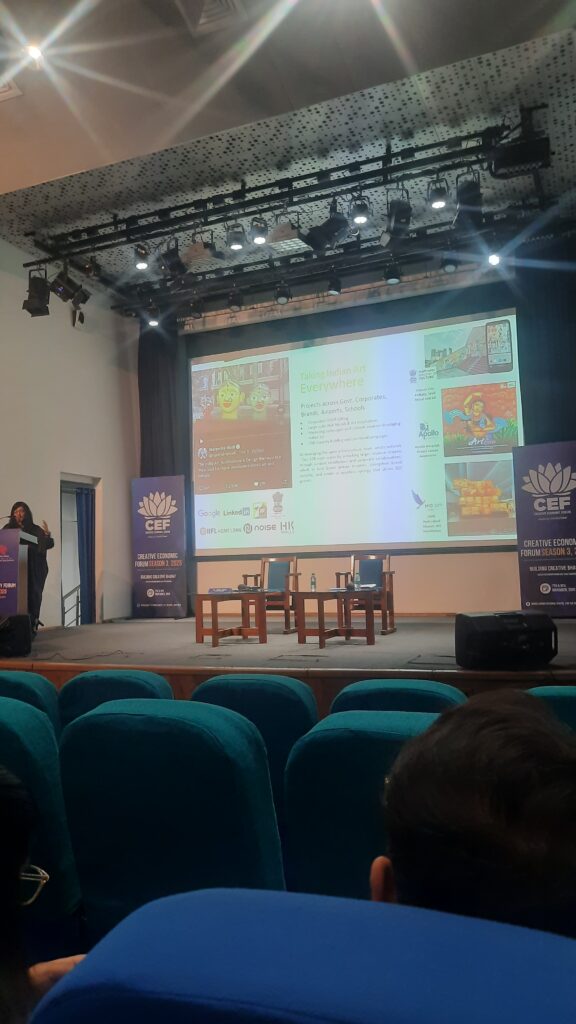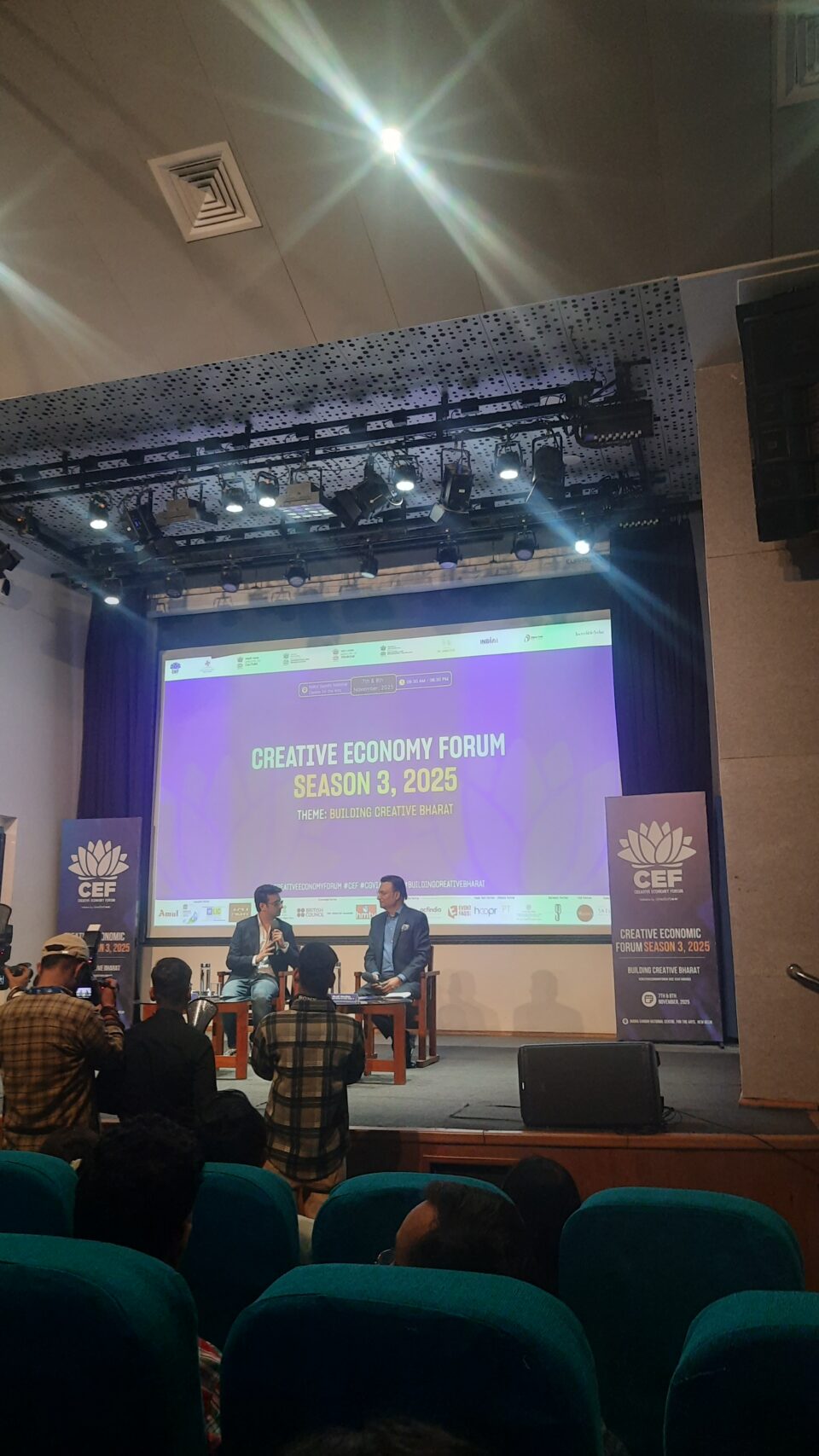From Culture to Commerce: The Creative Economy Forum ‘s Evolution Reshaping CX Leadership
Your best customers aren’t always transactions—they’re creators. When a business neglects the employee experience of its creative team, customer experience suffers next. The Creative Economy Forum ‘s three-season journey reveals something CX professionals must grasp: culture drives every customer touchpoint.
The Creative Economy Forum (CEF) has become India’s most significant platform for bridging culture, commerce, and connection in just three years. Founded by filmmaker and producer Supriya Suri through Cinedarbaar, this initiative evolved from a celebration of Indian cultural heritage into a strategic economic movement. For customer and employee experience professionals, CEF’s evolution offers critical lessons about building ecosystems where creators—and customers—genuinely thrive.
Creative Economy Forum Season 1: Celebrating Culture as Economic Power (July 2023)
The inaugural Creative Economic Forum debuted under a different name: Culture 20. Held on July 14, 2023, at the Indira Gandhi National Centre for the Arts (IGNCA), this first season emerged as India’s G20 presidency initiative. Dr. Laxmikant Bajpai, National Vice President of the BJP, and Dr. Sonal Mansingh, Padma Bhushan recipient, inaugurated an event designed to honor India’s cultural treasures.
Creative Economy Forum Season 1 operated on a foundational premise: creativity matters economically. This first gathering assembled cultural entrepreneurs, policymakers, creative practitioners, and diverse stakeholders under one roof. The forum celebrated homegrown talent across film, music, fashion, gaming, publishing, handicrafts, and arts. Though organized and structured, this debut was exploratory—testing whether a platform could unite creators from fragmented industries.
The real innovation of Season 1 wasn’t just who attended; it was the message conveyed. Culture wasn’t peripheral to economics. Instead, India’s cultural practitioners represented genuine economic engines. This reframing—treating artists and creators as legitimate economic actors—set the psychological foundation for everything CEF would become. For CX professionals, this season demonstrated a critical insight: when organizations elevate storytellers and creators as strategically important, employee engagement transforms.
Creative Economy Forum Season 2: Building a Roadmap for Tomorrow (August 31, 2024)
CEF’s second season arrived with urgency and ambition. Titled “Roadmap for Creative Industries for Vikshit Bharat 2047,” the August 31, 2024, edition shifted from celebration to strategy. Held at Dr. Ambedkar International Centre in New Delhi, Season 2 attracted 200+ panelists and participants representing government, international bodies, business leaders, and creative enterprises.
This second iteration focused on five strategic pillars: Innovation, Infrastructure, Investments, International Markets, and Collaboration. Justice Prathiba M. Singh of Delhi High Court inaugurated proceedings alongside Lily Pandeya (Joint Secretary, Ministry of Culture), Alison Barrett (British Council), and other government officials and international diplomats.
Season 2 broadened CEF’s mandate significantly. Sessions tackled intellectual property creation for creative industries, scaling creative businesses, export strategies, and innovation ecosystems. The presence of ambassadors from Ethiopia, Jamaica, and Slovakia signaled CEF’s emerging global relevance. Twelve creative entrepreneurs received the Creative Global Voice of India (CGVI) Awards, recognizing outstanding contributions.
The business shift mattered profoundly. Season 2 moved beyond celebrating culture to examining how creative ventures scale, attract investment, and compete globally. Industries discussed ranged from film and music to gaming, animation, and culinary arts. This expansion acknowledged that creative economy success requires infrastructure, capital access, and cross-border opportunity.
For experience professionals, Season 2 highlighted an essential truth: growth requires removing friction across ecosystems. The forum identified barriers hampering creative entrepreneurs—limited financing, inadequate tech infrastructure, unclear IP frameworks, and talent development gaps. Addressing these systemic pain points mirrors what exceptional CX teams do: map customer journeys, identify obstacles, and orchestrate cross-functional solutions.
Creative Economy Forum Season 3: Building “Creative Bharat” with Policy, Business, and Culture (November 7-8, 2025)
CEF’s third season launched just recently, on November 7-8, 2025, at IGNCA New Delhi. Titled “Building Creative Bharat,” this edition synthesizes lessons from prior years into an integrated vision. The forum explicitly operates on three pillars: policy, business, and creativity.
Season 3’s lineup reflects maturity. Featured speakers included Justice Tejas Karia (Delhi High Court), media icon Rajat Sharma, fashion pioneer Rina Dhaka, business leader Avarna Jain, and international experts like Gayle McPherson and Marie McPartlin from Somerset House Studios, UK. The inclusion of international thought leaders alongside Indian policymakers signals CEF’s establishment as a globally credible platform.
Sessions at Season 3 addressed sophisticated challenges: “The Road to IPO for India’s Creative Businesses,” “Creative Capital: Investing in India’s Design Future,” “Cinema Theatre Economics,” and “Empowering the Creative Economy: AI in Action.” These topics transcend cultural celebration; they examine scalability, investor readiness, technology integration, and economic viability.
Notably, Season 3 engaged with creator empowerment directly. AI’s role in creative production, digital transformation of cinema, and technology’s impact on creative work emerged as central concerns. This represents evolution beyond infrastructure discussions toward human-technology integration—crucial as automation reshapes creative labor.
The CX and EX Imperative Hidden in CEF’s Evolution
The Creative Economy Forum’s journey from Season 1 to Season 3 reveals three transformation patterns critical to CX and EX leadership:
From Transactional to Relational Platforms
Season 1 functioned as a transactional platform: creators attended, networked, celebrated together, then dispersed. Season 3 functions relationally: participants engage with ongoing ecosystem development, policy influence, and investment pipelines. This shift mirrors the best CX evolutions—moving from one-time interactions to continuous engagement ecosystems. Top-performing companies embed customers into ongoing value creation, not isolated moments.
CX professionals should ask: Are your customer touchpoints episodic or relational? Do interactions happen in silos, or do they feed into sustained communities?
Bridging Silos Through Systemic Thinking
Early CEF seasons operated with separate tracks for policy, business, and creativity. By Season 3, these domains intentionally converge. Policy discussions inform business opportunities. Business models test creative viability. Creative output guides policy implications. This cross-functional coherence directly parallels what exceptional CX organizations do: break departmental silos, align customer-facing teams, and ensure consistency across touchpoints.
Silo-breaking requires deliberate design. CEF embedded this through panel compositions, workshop formats, and networking structures that forced diverse stakeholders into dialogue. Your organization can replicate this through cross-functional CX councils, journey mapping sessions including non-traditional departments, and shared KPIs that transcend functional boundaries.
Scaling Impact Through Inclusive Leadership
Season 1 showcased individual talent and enterprise. Last year, Season 2 focused on scalability and infrastructure. This year, Season 3 emphasizes ecosystem empowerment. Each evolution expanded who holds decision-making power. CEF deliberately elevated grassroots creator voices, MSME perspectives, and emerging entrepreneur viewpoints alongside corporate and governmental leaders.
This inclusive leadership model strengthens EX profoundly. When employees feel their voices influence strategy, engagement soars. Research from Great Place to Work shows that organizations fostering entrepreneurial mindsets—where employees propose and test ideas—achieve higher innovation and retention. CEF’s evolution demonstrates this principle at scale.
Data-Driven Evolution: What the Numbers Reveal
CEF Season 3’s scope reflects dramatic growth. The first edition attracted several hundred participants. Season 2 brought 200+ panelists from multiple countries. Season 3 expanded to two full days at one of India’s premier cultural institutions, with significantly larger delegate participation. International speaker representation increased from a handful in Season 1 to dozens in Season 3.
More tellingly, the awards mechanisms evolved. Season 2 recognized twelve creative entrepreneurs through CGVI Awards. By Season 3, recognition expanded to include technology innovators, policy influencers, and cross-sector collaborators—not just individual creators. This broadened recognition model encourages ecosystem contribution beyond personal achievement.
For CX teams, growth metrics matter less than engagement depth. CEF’s evolution demonstrates this principle. Season 3’s sophistication stems not from size but from stakeholder investment. When speakers include sitting judges, ambassadors, and international institutional leaders, conversations transcend surface celebration and enter substantive territory.
The IP and Scaling Challenge: CEF’s Unresolved Frontier
Despite three seasons, Indian creative enterprises still face persistent scaling barriers. IP ownership clarity remains contested. Access to institutional finance remains limited. Tech infrastructure for creative production lags global standards. These unresolved challenges reflect a broader CX lesson: platform effectiveness requires solving root-cause friction, not papering over symptoms.
Many CX initiatives stumble here. Platforms launch, generate initial excitement, then plateau when they address touchpoint polish without tackling systemic obstacles. CEF avoids this trap by progressively examining foundational barriers. Season 2 identified them. Season 3 structures conversations toward solutions.
Customer experience professionals often encounter similar dynamics. Surface improvements—faster response times, friendlier tone—boost initial satisfaction. Lasting loyalty emerges when organizations systematically eliminate structural pain points. That requires systemic thinking, cross-functional collaboration, and willingness to examine uncomfortable truths about how work gets organized.
Actionable Insights for CX and EX Leaders
Establish Platforms, Not Just Programs
CEF succeeds because it functions as an ongoing platform connecting fragmented ecosystems, not a series of annual events. Your customer and employee experience initiatives should similarly create containers for continuous connection, learning, and co-creation. This means investing in communities, forums, and feedback mechanisms that operate year-round, not spike around specific moments.
Align Policy, Product, and People
CEF’s three-pillar structure—policy, business, creativity—ensures no domain operates in isolation. Translate this into your organization by explicitly connecting strategy conversations with customer journey mapping and employee capability planning. Too many CX initiatives exist in marketing or customer service silos. Sustainable CX transformation requires CEO and board alignment, operational restructuring, and investment in enabling infrastructure.
Evolve Recognition Systems
CEF’s awards progressively broadened from celebrating individual creators to recognizing ecosystem contributors. This mirrors mature employee experience strategies where recognition transcends top performers and celebrates those enabling others’ success—collaborators, mentors, system builders. Expand your recognition systems accordingly.
Measure Ecosystem Health, Not Just Satisfaction
CEF’s impact can’t be reduced to NPS or attendee satisfaction surveys. The forum’s success emerges in downstream outcomes: creative enterprises securing investment, policies shifting toward creator support, international collaborations forming. Similarly, sophisticated CX measurement transcends satisfaction metrics to examine customer lifetime value, advocacy, and ecosystem contribution. Build measurement systems capturing these deeper outcomes.
Embrace Inclusive Leadership in Design
CEF deliberately includes grassroots voices in platform design and governance. This isn’t tokenism; it shapes what conversations occur and which challenges receive priority. Your CX initiatives should similarly embed customer and frontline employee voices in strategy development. This builds legitimacy, unearths blind spots, and accelerates execution.
The Broader Implication: Culture as Competitive Advantage
CEF’s three-season evolution demonstrates a truth many organizations haven’t internalized: culture generates competitive advantage. Not culture as decorative mission statements. Rather, culture as systematically designed ecosystems where diverse stakeholders contribute meaningfully, obstacles get removed, and individual talent aligns with collective purpose.
This principle applies equally to customer experience and employee experience. Companies that treat customers as co-creators—inviting them into product development, governance, and strategy conversations—build fiercer loyalty than those offering superior products alone. Similarly, organizations treating employees as strategic thinkers and ecosystem builders attract and retain talent in ways compensation alone cannot.
CEF’s founder, Supriya Suri, articulated this philosophy explicitly: CEF positions creators not as peripheral talent but as economic citizens and cultural stakeholders. This reframing matters. It says: your contribution generates value. Your voice influences decisions. Your success drives collective prosperity.

Conclusion: Toward Integrated Creative Experience
The Creative Economy Forum’s journey from Season 1’s cultural celebration to Season 3’s strategic ecosystem represents more than event evolution. It models how organizations can progressively mature platforms connecting fragmented stakeholders into coherent systems.
For customer experience and employee experience professionals, CEF offers concrete lessons. Build platforms enabling continuous connection. Bridge silos through deliberate cross-functional design. Broaden recognition to celebrate ecosystem contribution. Measure impact on scalability and opportunity creation, not satisfaction alone. Embed diverse voices in strategy development.
Most fundamentally, CEF demonstrates that sustainable growth emerges when organizations treat human contributors—whether creators, customers, or employees—as strategic partners in value creation rather than transactional participants. This philosophy shifts everything: from hiring and onboarding through customer support and strategic planning.
As India’s creative industries continue scaling globally, CEF’s three seasons have established a proven model: intentional platforms, systemic thinking, inclusive leadership, and relentless focus on removing friction. Organizations serious about CX and EX transformation should study this evolution closely and adapt its lessons to their own contexts.
The most successful businesses in the next decade won’t just serve customers or manage employees. They’ll build thriving ecosystems where all participants—creators and consumers, innovators and implementers—experience genuine belonging and opportunity. CEF’s evolution shows what’s possible when organizations commit to that ambitious vision.


